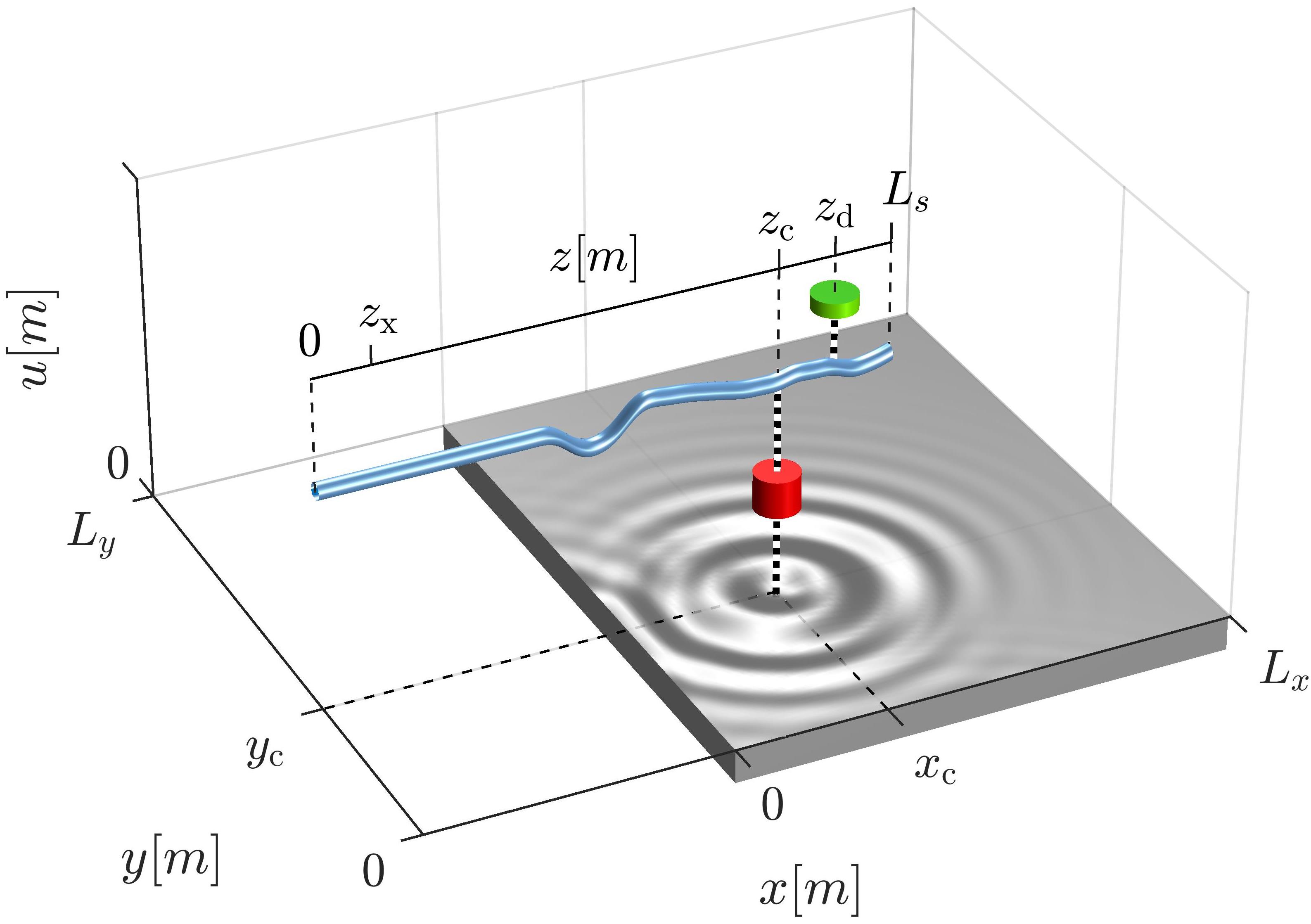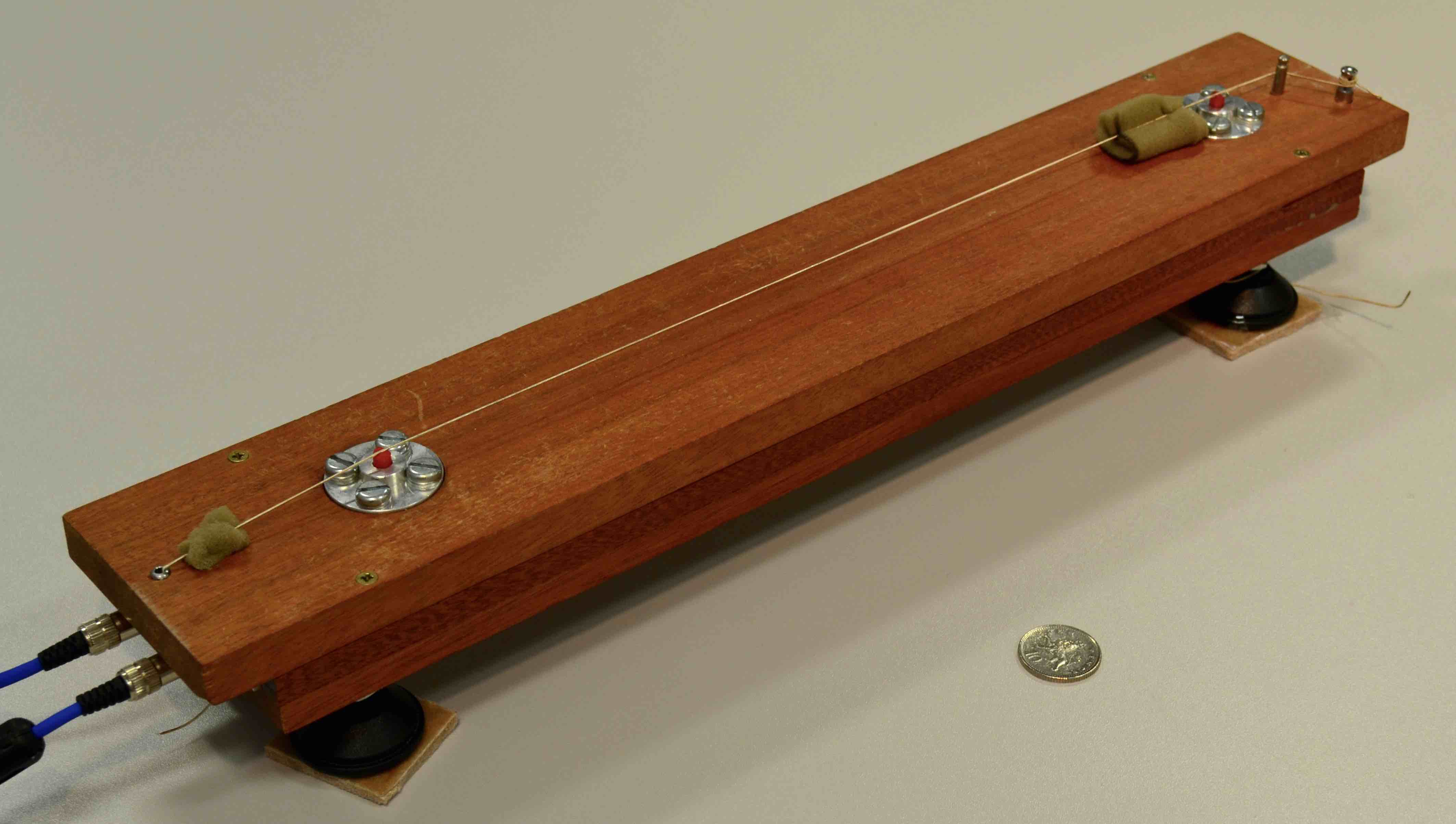Virtual-Acoustic String Bridge Plate Instrument
 Virtual-Acoustic String Bridge Plate Instrument is based on
a physical model that simulates the vibrations of a string and a rectangular plate,
coupled with a (nonlinear) spring-mass element. The virtual-acoustic
string-bridge-plate affords new possibilities and freedom regarding parameter
choices and on-line changes that are not possible (or very expensive to
realise) in real-world instruments. The system takes the form of a string and a
plate connected by a parameterised bridge element, with a local damper fitted on the
string. The bridge can be parametrically configured to simulate different types of
linear and nonlinear coupling, including mass-like behaviour, spring stiffening and
contact phenomena (i.e. rattling and buzzing). For detailed information
and sound examples please refer to DAFx17
paper. Or you can download the plugin in AU or VST by clicking the button
below (Mac only).
Virtual-Acoustic String Bridge Plate Instrument is based on
a physical model that simulates the vibrations of a string and a rectangular plate,
coupled with a (nonlinear) spring-mass element. The virtual-acoustic
string-bridge-plate affords new possibilities and freedom regarding parameter
choices and on-line changes that are not possible (or very expensive to
realise) in real-world instruments. The system takes the form of a string and a
plate connected by a parameterised bridge element, with a local damper fitted on the
string. The bridge can be parametrically configured to simulate different types of
linear and nonlinear coupling, including mass-like behaviour, spring stiffening and
contact phenomena (i.e. rattling and buzzing). For detailed information
and sound examples please refer to DAFx17
paper. Or you can download the plugin in AU or VST by clicking the button
below (Mac only).
String Board Controller
 The string-board controller was based
on the concept of reconnecting a (silent) string controller with a modal
synthesis resonator across the real and virtual domains by direct routing of
excitation signals and model parameters. Making use of adaptive filtering techniques
to design an appropriate inverse filter, it provides a calibrated signal estimation
of the forces exerted by the musician. Each of the bridges consists of a plastic
cylindrical piston housed by a metal holder, as such sensing forces only in the
vertical direction. The calibration, which removes the ‘nasal’ timbre
normally observed with piezo disks, is now effected by scaling the modal excitation
weights in the string model, rather than using a dedicated digital filter at the
input stage. Although initially intended to be played through plucking, scraping,
tapping, and bowing the string, force signals can also be generated by tapping the
board it is mounted on; this alternative mode of interaction affords slightly
different nuances in the generated excitation signals.
The string-board controller was based
on the concept of reconnecting a (silent) string controller with a modal
synthesis resonator across the real and virtual domains by direct routing of
excitation signals and model parameters. Making use of adaptive filtering techniques
to design an appropriate inverse filter, it provides a calibrated signal estimation
of the forces exerted by the musician. Each of the bridges consists of a plastic
cylindrical piston housed by a metal holder, as such sensing forces only in the
vertical direction. The calibration, which removes the ‘nasal’ timbre
normally observed with piezo disks, is now effected by scaling the modal excitation
weights in the string model, rather than using a dedicated digital filter at the
input stage. Although initially intended to be played through plucking, scraping,
tapping, and bowing the string, force signals can also be generated by tapping the
board it is mounted on; this alternative mode of interaction affords slightly
different nuances in the generated excitation signals.